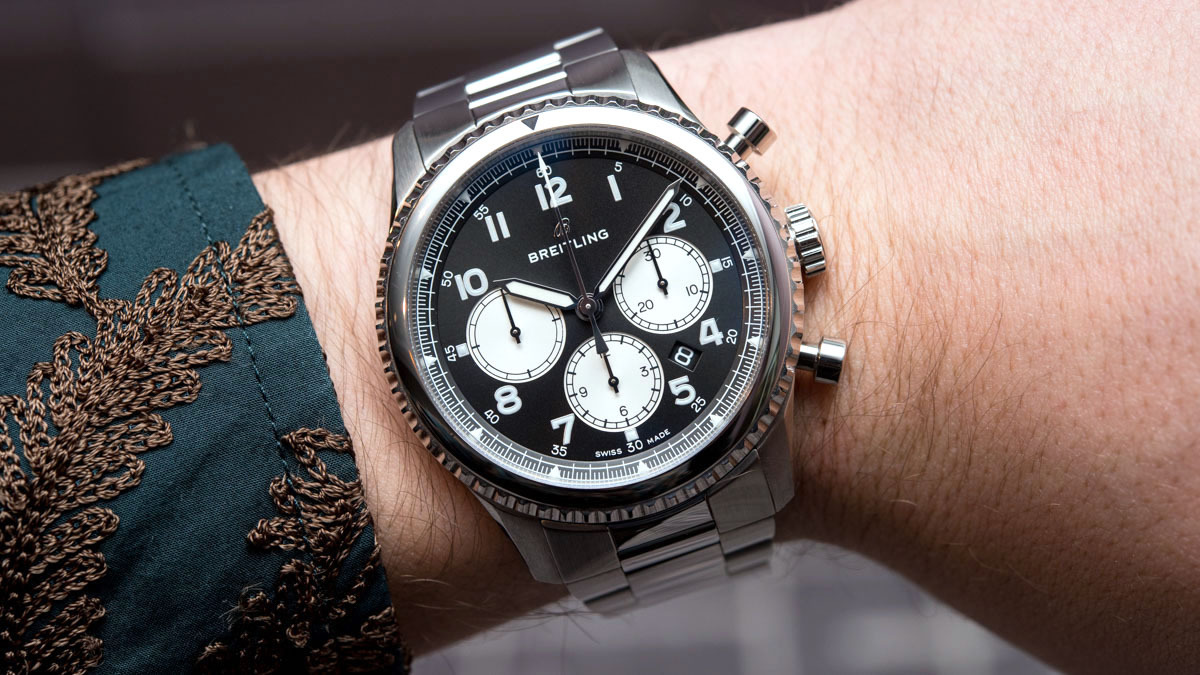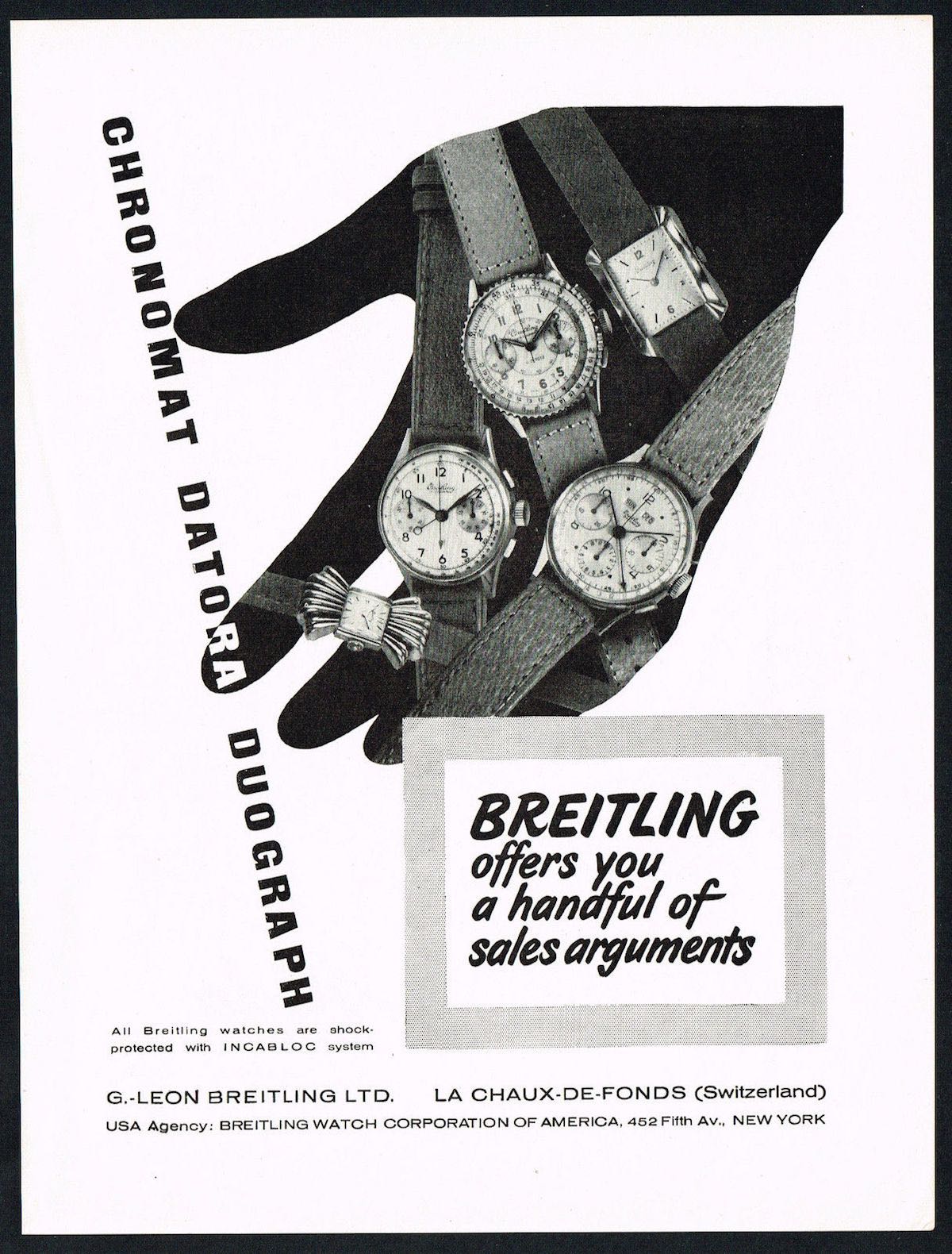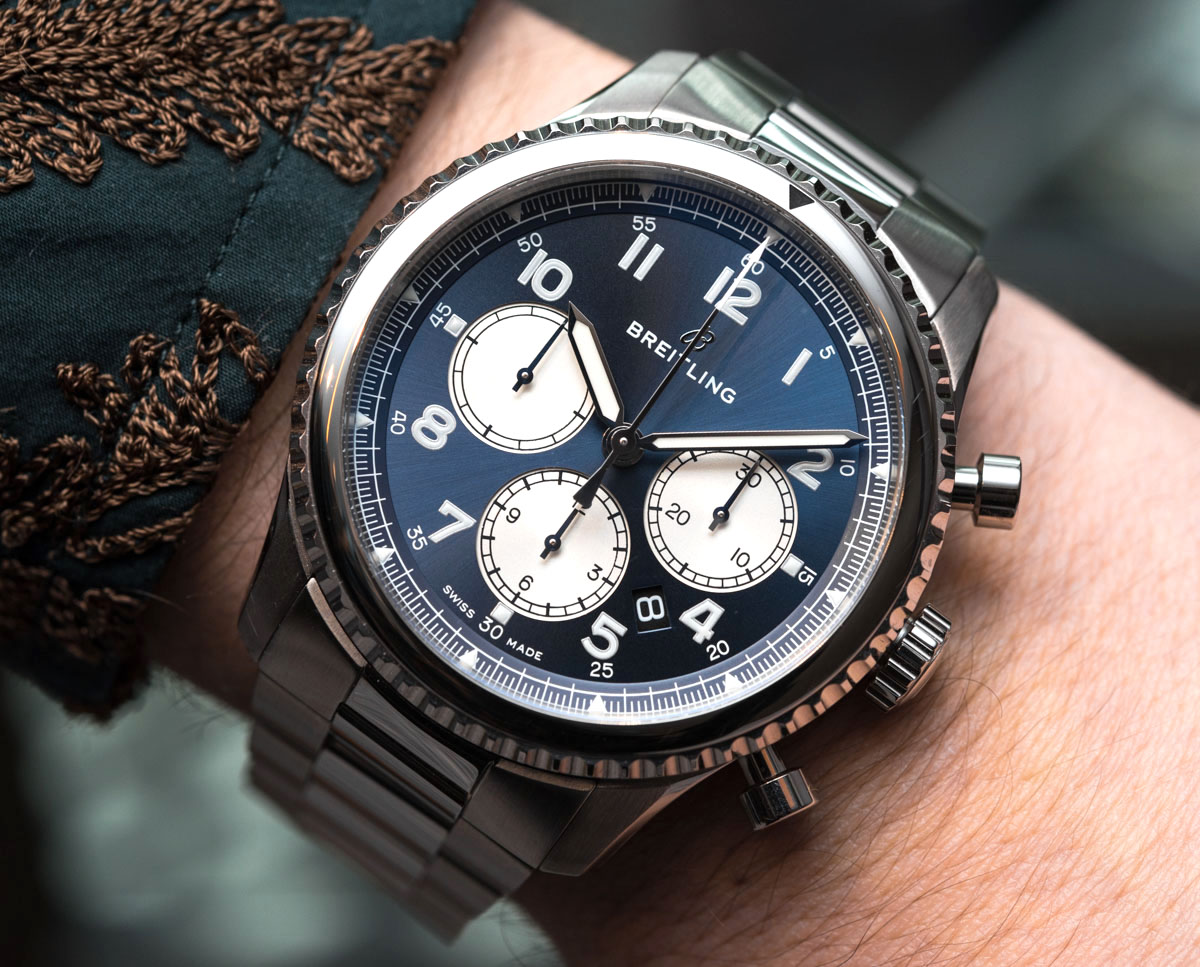
Although Breitling may appear to be a relatively simple brand, with its dedication to the exceedingly niche segment of big pilot watches, those of us who like it do so for a surprisingly wide variety of reasons. There have been some groundbreaking changes at Breitling in 2017 which we duly reported as they were happening: the company was sold to CVC Capital Partners for an estimated €840mn in April, 2017, and ex-IWC CEO Georges Kern announced getting aboard at Breitling in July, 2017… and these changes, along with the surprising new Navitimer 8 collection (news coverage here) raised many questions in the concerned minds of us Breitling fans. I flew over to NYC to listen to what Georges Kern had to say about his priorities and short- to long-term plans, chat with Creative Director Guy Bove, and interview Tim Sayler, the new Chief Marketing Officer of the brand to get a better understanding of where things are headed.
A good hint at the detail and depth of revolution happening at Breitling is my 1,321-word-long, unedited Gmail draft, full with the notes I had been taking during these talks: clearly, unlike with most other Swiss luxury brands these days, there was plenty of new stuff to be told to us and, through us, to all of you reading. Without further ado…
Greater Focus On Breitling’s Extensive History
This bit would come as no surprise from any other brand – pretty much all the big ones are doing (and overdoing) it at this point. An even better indicator of the importance of Breitling’s new-found focus on its past is the fact that their best-selling model for the last 12-15 months, and I’ve heard this both at the event and from retailer sources as well, is the time-only Superocean Heritage II (detailed info on it and its Tudor movements here). This is a model that goes strongly against what the brand is best known for, as a restrained(-ish), vintage inspired, 3-hand dive watch, without a winged-B logo from Breitling, the purveyor of contemporary pilot’s chronographs.
There’s not much we can do about it at the moment: the tides have turned and a large portion of watch buyers (i.e. people who actually buy watches) have turned towards vintage-ish, more simple, and familiar-looking offerings from big brands. In Kern’s words: “People are going back to the roots, want more simple, less shiny, reassuring products. I have to respond to what the customer wants and the realities of the market.” This is a sad reality for those of us who are buying watches for our own entertainment and not for reassurance – on a personal note, I agree with Kern’s assessment and just want to add that I do see a vintage or vintage-remake watch from a big brand as the single most reassuring watch one can possibly buy today.
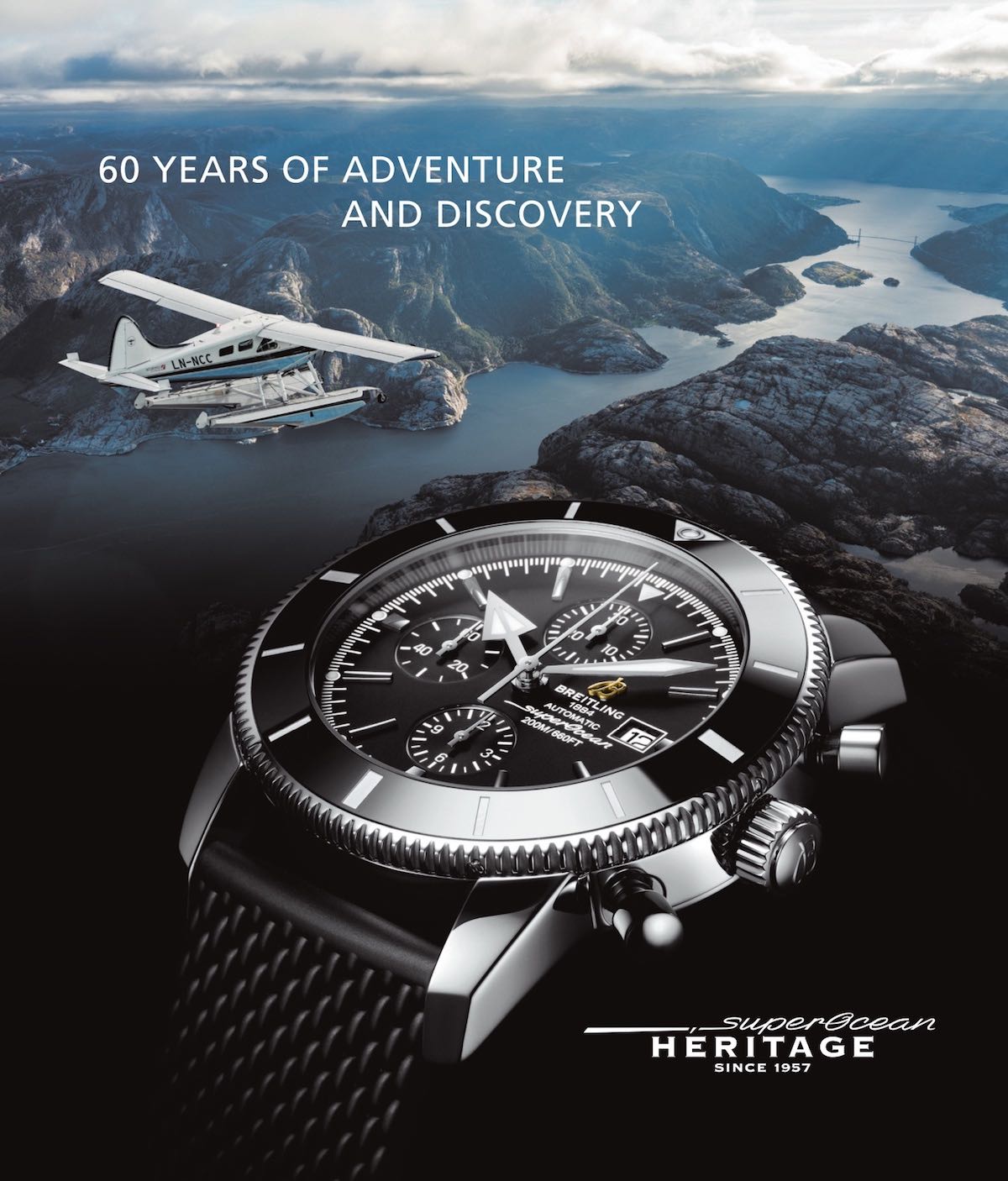
I will not go off on a broader discussion on the vintage trend – a feature article has been brewing in my mind but is yet to boil down – but I will add that people are perhaps retracting to vintage stuff not simply for the reasons he mentioned, but because most contemporary offerings are either boring (they aren’t contemporary anymore when they’re the same watch as 10, 15, or even 20 years ago, just with different colors!) or if they are indeed new, they are poor designs. I disagree with the idea that everyone buys vintage re-releases because they are reassuring. They buy it because it’s actually new to them. If the big brands guilty of putting their heads deep into their own archives and abandoning all the talent they have onboard today were actually launching intelligently designed, properly modern stuff today, they would, I am sure, do well with those.
Many people buy vintage not because vintage is old, but because they are bored with the quasi-modern stuff they have been seeing in watch store windows for the last 15 years and want something new – and that refreshingly new stuff, to many, is vintage, something they haven’t owned yet because they were busy buying contemporary stuff at the time when it had some novelty to it. I understand things aren’t as simple as this, but I stand strongly by the idea that it is the void in beautifully made, genuinely new watches that is pushing many into cherry-picked vintage stuff, because cherry-picked vintage re-releases are by a better chance going to be proportionate, everyday-wearable, and unlike the products seen in every other watch shop window for the last 20 years. Anyway, let’s get back on track.
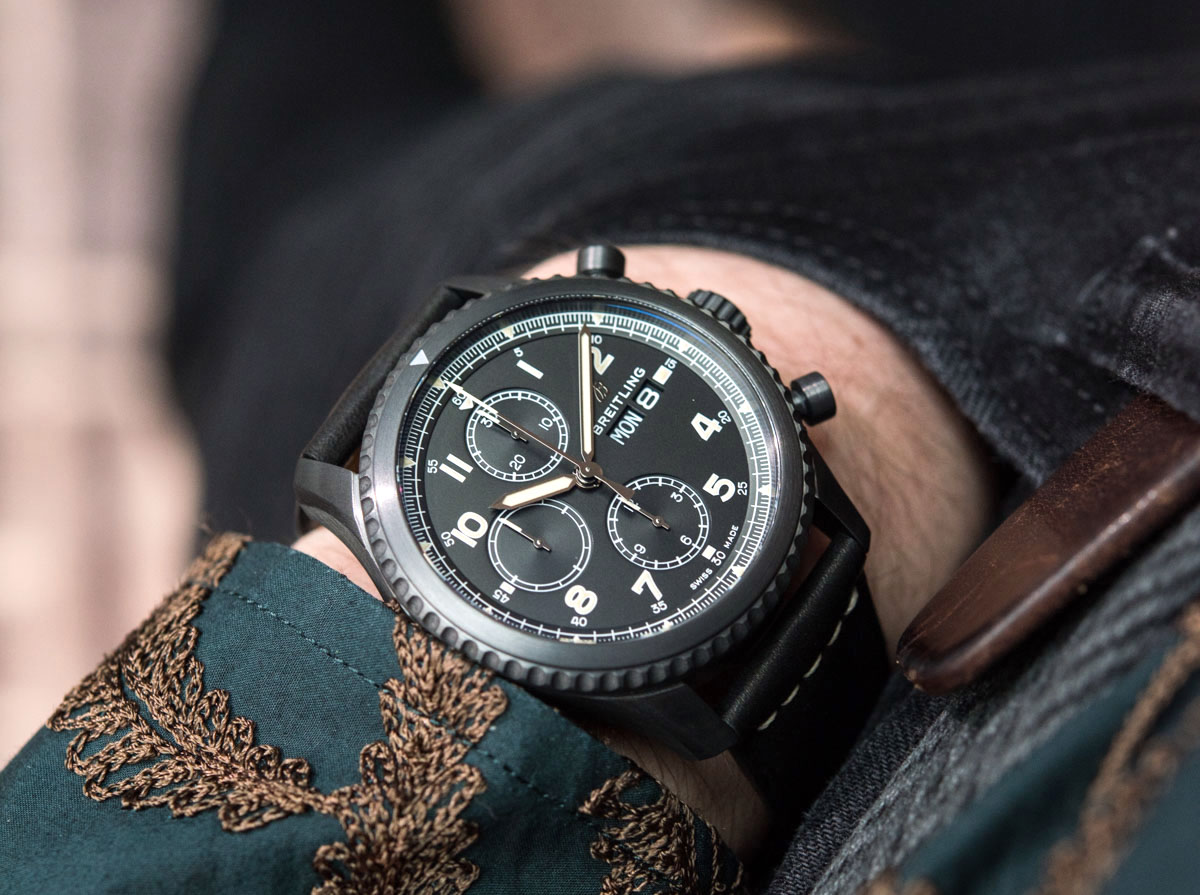
“The Three Reasons Why People Buy A Watch Today…”
At some point during the NYC launch event for the Navitimer 8, Breitling had a highly dedicated collector of vintage Breitling on stage. When asked about why he collects vintage Breitling, the first thing he said was that he likes these watches so much because Breitling was so far ahead the others at the time. You see, he didn’t say design, he didn’t say this or that logo and he certainly didn’t say branding or communication. He said he has hundreds of awesome vintage Breitlings and he loves the brand “because the products were way ahead in the game.” By contrast, Georges Kern said: “Nothing will be invented, everything is there. (…) I open a drawer and I could do 30 launches, there are so many great things there.” Now, “nothing will be invented” clearly is a stretch so let’s not get bogged down there.
However, when I had the chance, I spoke with Mr. Kern and after pointing out what the collector said at the event the night before, I asked him when and how we could expect to see Breitling taking the lead when it comes to highly technical stuff. To this, he responded to me by saying “The first reason why most people buy a watch today is brand. The second reason is the brand, and the third reason is the brand. Nobody cares about a new novel movement. They want a reliable movement at a good price, and a strong brand.”
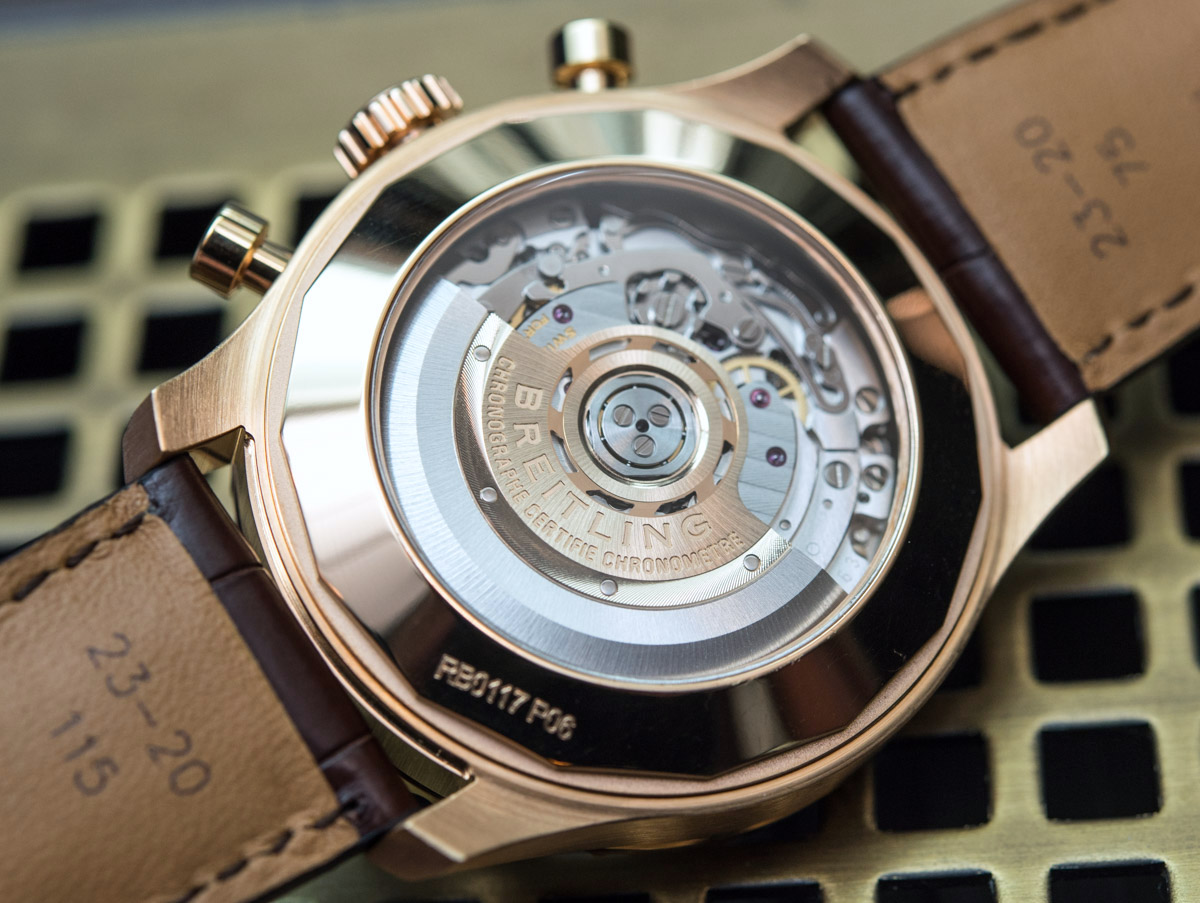
Again, as much as it pains me, I have to agree with that assessment, even if it leaves dangerously large room for interpretation. If I may, I’d suggest you don’t read that as though it was the end of the world, because, clearly, Kern’s understanding of how watch brands work and don’t work goes deeper than branding – but it is true that once we look beyond the small, albeit expanding group of die-hard watch aficionados, we find an annual market for 25 million Swiss watches and I can assure you, that market is kept alive not by us, hardcore aficionados, but by the watch buying masses. And watch buying masses don’t give a hoot about minuscule technological advancements between different generations of in-house movements – or even if they did, branding, marketing, pricing, and the image associated with a brand all come far, far before on their list of priorities than the difference between a vertical and a horizontal clutch. Much in the same way how all those factors come before they give a flying rat’s arse about the difference between a single or twin-scroll turbo in their next BMW.
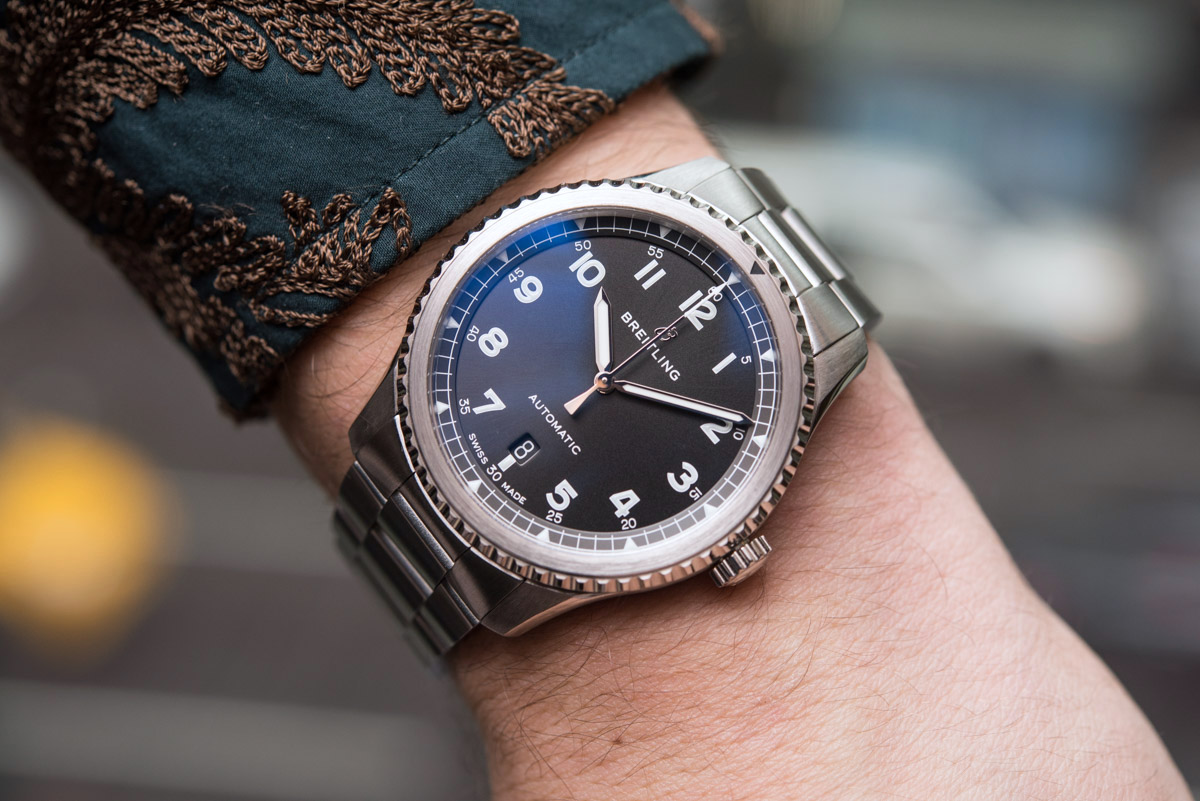
“We Need To Make Smaller & More Traditional Products”
Breitling was largely unaffected by the massive meltdown of the Chinese luxury watch market a few years ago… mainly because Breitling has traditionally not been popular there in the first place (by contrast they are the 4th biggest brand in the US). There are two main reasons for this lack of resonance with the biggest luxury watch market in the world: first, Breitling watches are just too large for that market and, second, aviation in Kern’s words “is not a value in China, there’s no dream attached to it. Aviation there is you take a plane and you lose your luggage. China has 1.6 billion people, 300 million is in our price segment so why ignore half of the market?”
Lucky for Kern, Breitling has an extensive history of making cool watches that go well beyond modern Breitling’s self-imposed limitations of large, modern pilot watches. The Superocean of the ’50s was at the time advertised as a full-on dive watch, the Transocean was a great-looking casual three-hander, the Chronomat was a neat everyday chronograph and the Unitime was there perfectly on time to cater to the jet set. They were wearable, fashionable, and highly functional timepieces ready to take on a brave new world – and none of the five aforementioned collections were pushed into the niche market of wannabe pilots, or what have you.
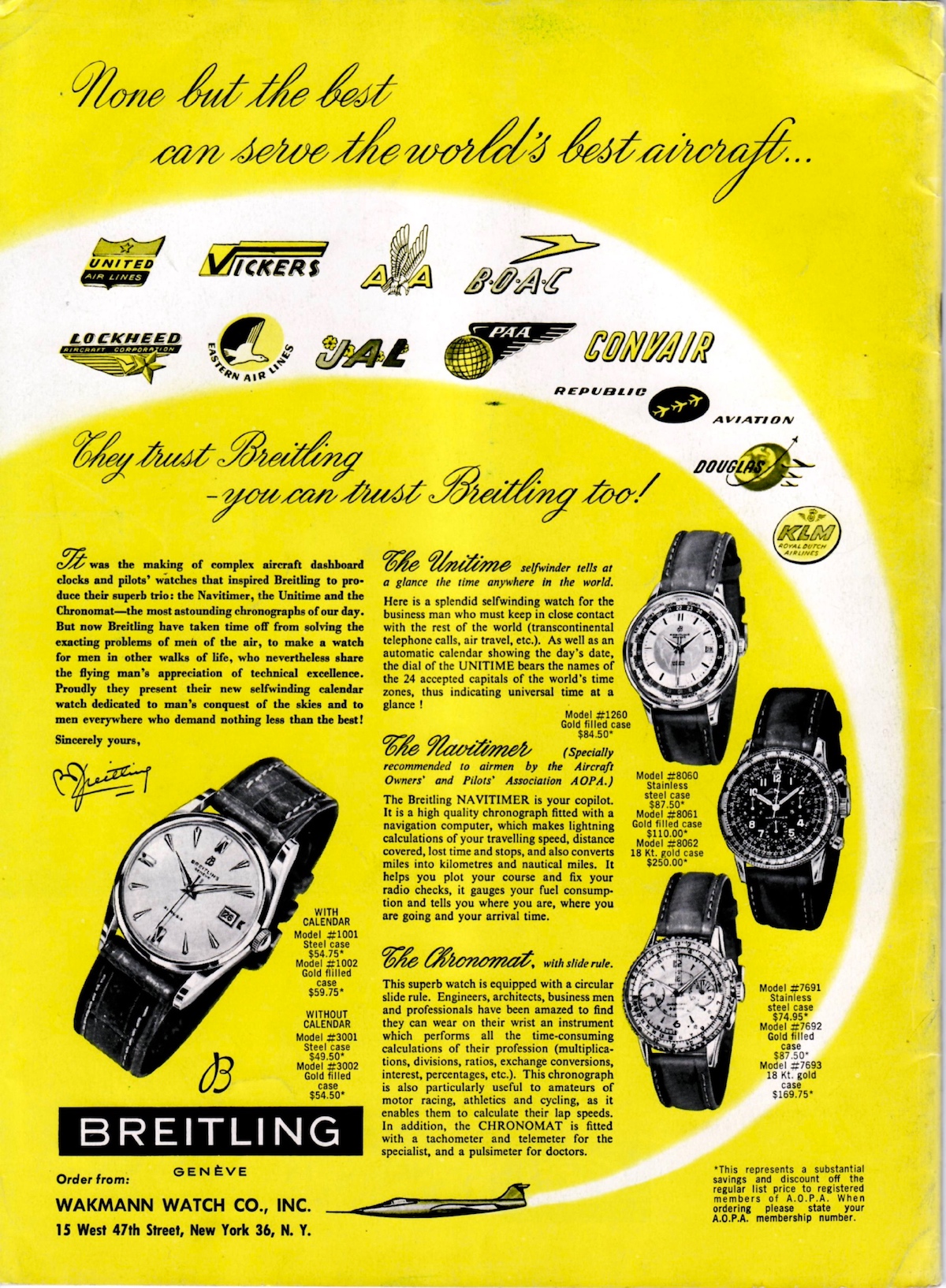
Cool late-1950s ad showing a variety of Breitling watches, including the Unitime, Navitimer, Chronomat.
So yeah, Kern is absolutely right that Breitling has a lot to work with both in terms of product and in terms of legitimate identity. He has also addressed the issue a number of times how so many of today’s Breitling customers, or even the wider watch loving audience, is largely unaware of Breitling’s extensive history for the simple fact that the brand has not focused on communicating it too much (or at all) in recent years. The problem is that Breitling has two very different communities to make happy: one that likes and collects vintage Breitling stuff, and one that loves Breitling for what it has been in the 3rd millennia, the focused producer of massive, sporty, go-anywhere, complicated-looking, modern pilot’s chronographs. Kern says “I’ve never experienced this in my career. We need to bridge both things and yes, we need to have big pilot watches.”

